结论 - 小米 17
小米最新一代智能手机不仅开创了一个新的设备命名时代,而且使电池续航问题成为紧凑型智能手机的过去式。尽管手机外壳相对轻薄,但在我们的测试中,这款小巧的高端手机却能提供出色的电池续航能力,保证日常使用数天。
此外,高能效的骁龙 8 精英 5 代也为一流的电池性能做出了贡献。虽然高通芯片组的性能非常强大,但由于散热问题,尤其是图形芯片的散热问题,小米似乎无法充分发挥其潜力。
除此之外,我们没有太多可以批评的地方。小米 17 提供了一个完全成功的完整套装。如果你迫不及待地想购买全球版本,又能忍受中国版本的限制(无Android Auto、无 eSIM 卡等),那么你就能买到目前外形最小巧的智能手机之一。此外,它的价格也很有吸引力,而且还有多种频率可供选择。
Pros
Cons
价格和供货情况 - 小米 17
小米 17 最初只在中国推出,建议零售价为 4499 元人民币(约合 630 美元)起。在我们的租赁合作伙伴深圳贸易公司,进口价格约为 728 美元起。到目前为止,小米还没有发布任何有关国际发布的细节。不过,鉴于前代产品已经有了全球版本,我们认为未来在欧洲上市的可能性很大。
Table of Contents
- 结论 - 小米 17
- 规格 - 小米 17
- 案例 - 边框纤薄的紧凑型智能手机
- 功能 - 可输出图像的紧凑型旗舰手机
- 软件 - 装有Android 16 的小米手机
- 通信和全球导航卫星系统 - 带有 WiFi 的Android 手机 7
- 电话功能和语音质量 - 紧凑型双 SIM 卡手机
- 相机 - 小米 17 的新徕卡镜头
- 配件和保修 - 小米 17 包括一个充电器
- 输入设备和操作 - 配备超声波指纹传感器的小巧手机
- 显示屏 - 小巧的智能手机却熠熠生辉
- 性能 - 小米采用了最好的芯片组
- 游戏 -Android ,一款具有游戏雄心的手机
- 排放 - 小手机,大热量
- 电池续航时间 -Android 拥有超强续航能力的手机
- Notebookcheck 总体评分
- 可能的替代品比较
由于中国制造商的最新旗舰智能手机系列赶上了目前的 iPhone 时代,小米现在与Apple 齐名。小米 小米 15 的的后继机现在被命名为小米 17,并承诺以小巧的外形提供真正的旗舰体验。
与前代产品相比,这款产品的规格表有多项重大升级。最重要的是,这款紧凑型旗舰手机的电池容量提升到了一个全新的水平,而新的 骁龙 8 精英 5 代应该会树立新的标杆。
规格 - 小米 17
案例 - 边框纤薄的紧凑型智能手机
小米 17 的屏幕对角线尺寸为 6.3 英寸,是市场上最小巧的高端智能手机之一,厚度约为 8 毫米,重量仅为 191 克,比前代产品略薄,重量相同。 前代.不过,它的电池容量大幅增加,现在达到了 7,000 毫安时,而相比之下,iPhone 17 Pro 的电池容量虽然小巧,但重量却要重得多。 iPhone 17 Pro的电池容量仅为 4,000 mAh 左右。
小米 17 的制造质量令人印象深刻。一体成型的铝合金边框和玻璃后壳触感极佳。磨砂表面有助于在视觉上隐藏指纹。此外,小米 17 还通过了 IP68 认证,具有出色的防尘防水性能。
屏幕四边边框非常纤薄,屏占比高达 89.5%。OLED 显示屏由龙晶玻璃保护,龙晶玻璃在国际上也被称为小米盾形玻璃。
» Notebookcheck多媒体笔记本电脑Top 10排名
» Notebookcheck游戏笔记本电脑Top 10排名
» Notebookcheck低价办公/商务笔记本电脑Top 10排名
» Notebookcheck高端办公/商务笔记本电脑Top 10排名
» Notebookcheck工作站笔记本电脑Top 10排名
» Notebookcheck亚笔记本电脑Top 10排名
» Notebookcheck超级本产品Top 10排名
» Notebookcheck变形本产品Top 10排名
» Notebookcheck平板电脑Top 10排名
» Notebookcheck智能手机Top 10排名
» Notebookcheck评测过最出色的笔记本电脑屏幕
» Notebookcheck售价500欧元以下笔记本电脑Top 10排名
» Notebookcheck售价300欧元以下笔记本电脑Top 10排名
功能 - 可输出图像的紧凑型旗舰手机
小米 17 有多种配置,基本型号配备 12 GB LPDDR5X 内存和 256 GB 快速 UFS 4.1 存储空间。对存储空间有更高要求的用户只需选择顶级版本,它提供 1 TB 存储空间和 16 GB 内存。
这款小巧的高端手机配备了 USB 3.2 Gen 1 端口,不仅能快速传输数据,还支持 USB OTG 和有线视频输出。内置的 Miracast 允许小米智能手机无线连接显示器。
内置的红外发射器和 NFC 可用于非接触式支付以及控制兼容设备。不过,小米 17 不支持 UWB,这在 专业版.
软件 - 装有Android 16 的小米手机
小米 17 预装了Android 16 和 HyperOS 3,后者明显受到 iOS 界面的启发。例如,它包括 HyperIsland,这是小米对Apple 动态岛的诠释,提供了类似的功能。
此外,还提供了新的时钟设计,以及通过人工智能对人脸或动物照片进行分类和风格修改的功能,同样也是使用人工智能。运行 HyperOS 3 的小米智能手机现在即使关机也能在地图上定位。
与过去的中文版 HyperOS 一样,在欧洲你会发现只有英语才是真正可用的系统语言,而且你必须通过小米应用商店安装谷歌 Play 商店。不过,虽然谷歌框架已经包含在内,但小米只会公布全球版本的更新时间。
尽管如此,我们的中文版在未来四到五年内应该也会收到更新。值得肯定的是,Android 安全补丁是从 2025 年 10 月开始的,这也是本次评测的时间。
可持续性
通信和全球导航卫星系统 - 带有 WiFi 的Android 手机 7
小米 17 支持现代 Wi-Fi 7 标准,有两个发射天线和两个接收天线(2x2 MIMO)。根据数据表,只能使用 2.4 GHz 和 5 GHz 频段建立连接。不过,在我们的测试中,也检测到了 6 GHz 频道,与华硕 ROG Rapture GT-AXE11000 配合使用,我们实现了超过 1,000 Mbps 的高速传输。不过,与 像素 10 Pro仍有改进的余地。
在移动连接方面,小米 17 为 5G 和 4G 网络提供了广泛的频率范围,包括对良好网络覆盖(有时在农村地区)非常重要的 LTE 频段。它支持 Band 20 和 Band 28,以及 MIMO(4x4)。
| Networking | |
| Xiaomi 17 | |
| iperf3 transmit AXE11000 6GHz | |
| iperf3 receive AXE11000 6GHz | |
| Samsung Galaxy S25 | |
| iperf3 transmit AXE11000 | |
| iperf3 receive AXE11000 | |
| iperf3 transmit AXE11000 6GHz | |
| iperf3 receive AXE11000 6GHz | |
| Google Pixel 10 Pro | |
| iperf3 transmit AXE11000 | |
| iperf3 receive AXE11000 | |
| iperf3 transmit AXE11000 6GHz | |
| iperf3 receive AXE11000 6GHz | |
| Xiaomi 15 | |
| iperf3 transmit AXE11000 | |
| iperf3 receive AXE11000 | |
| iperf3 transmit AXE11000 6GHz | |
| iperf3 receive AXE11000 6GHz | |
| Apple iPhone 17 | |
| iperf3 transmit AXE11000 | |
| iperf3 receive AXE11000 | |
| iperf3 transmit AXE11000 6GHz | |
| iperf3 receive AXE11000 6GHz | |
| Global Average -3 | |
| iperf3 transmit AXE11000 | |
| iperf3 receive AXE11000 | |
| iperf3 transmit AXE11000 6GHz | |
| iperf3 receive AXE11000 6GHz | |
| Average of class Smartphone | |
| iperf3 transmit AXE11000 | |
| iperf3 receive AXE11000 | |
| iperf3 transmit AXE11000 6GHz | |
| iperf3 receive AXE11000 6GHz | |
电话功能和语音质量 - 紧凑型双 SIM 卡手机
相机 - 小米 17 的新徕卡镜头
前面提到的主摄像头采用了名为 Light Hunter 950 的新型 1/1.3 英寸传感器。该传感器旨在提供特别高的动态范围,并由 OIS 系统提供支持。在日光环境下,小米 17 能拍摄出非常出色的照片,即使拍摄对象略微锐化,这款小巧的小米手机在弱光环境下的表现也令人惊讶。相比之下 iPhone 17拍摄的照片明显不够细腻和模糊。
在变焦拍摄方面,还配备了一个具有光学防抖功能和无损 2.6 倍放大率的长焦镜头。由于采用了液态镜头设计,您还可以进行微距拍摄。
在日常情况下,只要光线条件合适,三星 JN5(对于一款紧凑型手机而言)就能提供良好的拍摄效果。即使是 10 倍变焦拍摄的效果也不会比 专业机型.
17 毫米超广角镜头的视场角为 102 度,成像效果不错,但并不特别出色。
Image comparison
Choose a scene and navigate within the first image. One click changes the position on touchscreens. One click on the zoomed-in image opens the original in a new window. The first image shows the scaled photograph of the test device.
Main cameraMain cameraLow lightUltra-wide-angle在可控光照条件下,我们对图像质量进行了更详细的检查,并将小米 17 与参考色进行了比较,我们记录到的偏差在令人满意的范围内。不过,在这个价位的智能手机中,也有一些手机的色彩增亮效果没有那么夸张,而且在过度饱和度方面也比较容易控制。
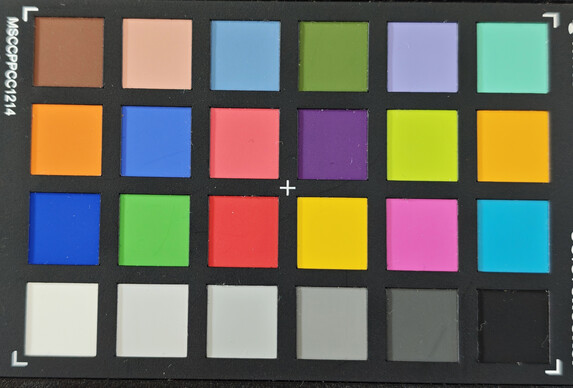
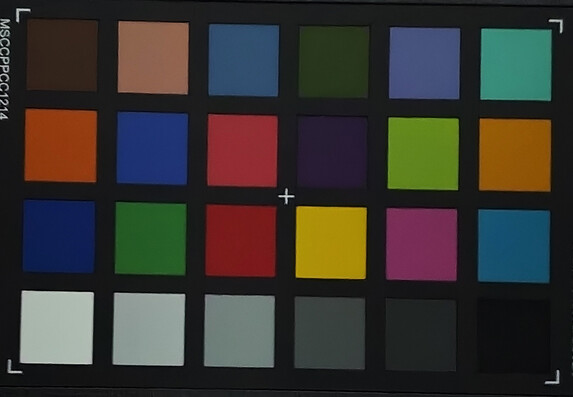
配件和保修 - 小米 17 包括一个充电器
中国版的包装盒内有一条 USB-C 数据线、一个保护套、一个 SIM 卡弹出工具和一个电源适配器。虽然全球版本可能没有充电器,但该机型确实预装了屏幕保护膜。
小米智能手机的 保修保修期为 12 个月,如果从深圳贸易公司进口的设备需要保修,您可以将智能手机寄往德国的送货地址。
输入设备和操作 - 配备超声波指纹传感器的小巧手机
显示屏 - 小巧的智能手机却熠熠生辉
6.3 英寸屏幕支持高达 120 Hz 的刷新率,由于采用了 LTPO 技术,它可以将上述刷新率降低到低至 1 Hz 的节能水平。像素密度超过 460 PPI,图像非常清晰。
据说,OLED 面板的峰值亮度为 3,500 尼特,比上一代产品亮 11%。 亮度提高了 11但同时功耗更低。我们使用逼真的 APL18 测试模式测得的最大亮度为 3,339 cd/m²,这与实际亮度非常接近,尤其是 HDR 内容通常可以让 OLED 面板获得额外的亮度。
在亮度控制方面,小米采用了 PWM 技术--这是 OLED 显示屏的典型技术。根据规格说明,它具有 2,160 Hz 的高频率,我们测得的基线闪烁频率约为 120 Hz。在我们的示波器测量中,整个亮度范围内的振幅响应都是一致的。一个新功能是可以在直流和 PWM 调光之间切换。
| |||||||||||||||||||||||||
Brightness Distribution: 98 %
Center on Battery: 1030 cd/m²
Contrast: ∞:1 (Black: 0 cd/m²)
ΔE ColorChecker Calman: 1.44 | ∀{0.5-29.43 Ø4.78}
ΔE Greyscale Calman: 2.5 | ∀{0.09-98 Ø5}
102.9% sRGB (Calman 2D)
Gamma: 2.274
CCT: 6868 K
| Xiaomi 17 LTPO AMOLED , 2656x1220, 6.3" | Samsung Galaxy S25 AMOLED, 2340x1080, 6.2" | Google Pixel 10 Pro OLED, 2856x1280, 6.3" | Xiaomi 15 OLED, 2670x1200, 6.4" | Apple iPhone 17 OLED, 2622x1206, 6.3" | |
|---|---|---|---|---|---|
| Screen | -12% | 65% | 7% | 15% | |
| Brightness middle (cd/m²) | 1030 | 1301 26% | 2161 110% | 1021 -1% | 1138 10% |
| Brightness (cd/m²) | 1021 | 1311 28% | 2198 115% | 1018 0% | 1127 10% |
| Brightness Distribution (%) | 98 | 98 0% | 94 -4% | 98 0% | 96 -2% |
| Black Level * (cd/m²) | |||||
| Colorchecker dE 2000 * | 1.44 | 3.1 -115% | 0.7 51% | 1.3 10% | 1.07 26% |
| Colorchecker dE 2000 max. * | 3.68 | 4.4 -20% | 1.8 51% | 2.9 21% | 2.99 19% |
| Greyscale dE 2000 * | 2.5 | 2.3 8% | 0.8 68% | 2.2 12% | 1.8 28% |
| Gamma | 2.274 97% | 2.01 109% | 2.19 100% | 2.25 98% | 2.22 99% |
| CCT | 6868 95% | 6454 101% | 6646 98% | 6658 98% | 6516 100% |
* ... smaller is better
Screen Flickering / PWM (Pulse-Width Modulation)
| Screen flickering / PWM detected | 120 Hz Amplitude: 18 % | ||
The display backlight flickers at 120 Hz (worst case, e.g., utilizing PWM) . The frequency of 120 Hz is very low, so the flickering may cause eyestrain and headaches after extended use. In comparison: 53 % of all tested devices do not use PWM to dim the display. If PWM was detected, an average of 8121 (minimum: 5 - maximum: 343500) Hz was measured. | |||
以固定变焦水平和不同亮度设置进行的一系列测量(最低亮度下的振幅曲线看似平缓,但这是缩放造成的。最小亮度下的振幅放大图可在信息框中查看)。
我们使用分光光度计和 CalMAN 软件进行了测量,结果清楚地表明,该屏幕不仅非常亮丽,而且在 "原色专业 "模式下还能提供高度精确的色彩还原。肉眼无法察觉 sRGB 色彩空间内色调和灰度的偏差。
提供两种不同的色彩配置文件和色温调节,而伽玛值等个别参数则无法再在 HyperOS 3 中进行定制。
Display Response Times
| ↔ Response Time Black to White | ||
|---|---|---|
| 0.6 ms ... rise ↗ and fall ↘ combined | ↗ 0.3 ms rise | |
| ↘ 0.3 ms fall | ||
| The screen shows very fast response rates in our tests and should be very well suited for fast-paced gaming. In comparison, all tested devices range from 0.1 (minimum) to 240 (maximum) ms. » 1 % of all devices are better. This means that the measured response time is better than the average of all tested devices (20.2 ms). | ||
| ↔ Response Time 50% Grey to 80% Grey | ||
| 0.4 ms ... rise ↗ and fall ↘ combined | ↗ 0.2 ms rise | |
| ↘ 0.2 ms fall | ||
| The screen shows very fast response rates in our tests and should be very well suited for fast-paced gaming. In comparison, all tested devices range from 0.165 (minimum) to 636 (maximum) ms. » 0 % of all devices are better. This means that the measured response time is better than the average of all tested devices (31.6 ms). | ||
性能 - 小米采用了最好的芯片组
小米 17 采用 骁龙 8 精英 5 代使其成为市场上性能最强的智能手机之一。
这款 3nm 芯片在小巧的小米手机中提供了强大的单核性能。凭借 Oryon Gen 3 Prime 内核,小米手机可与 Apple A19在 i手机 17.
在 Geekbench 6 多核测试中,骁龙 8 旗舰 5 代明显优于Apple 。
| UL Procyon AI Inference for Android - Overall Score NNAPI | |
| Xiaomi 17 | |
| Average Qualcomm Snapdragon 8 Elite Gen 5 (22372 - 23712, n=5) | |
| Samsung Galaxy S25 | |
| Average of class Smartphone (3769 - 81594, n=137, last 2 years) | |
| Xiaomi 15 | |
| Google Pixel 10 Pro | |
在图形处理性能方面,小米 17 给我们留下了深刻的印象,它配备了 高通 Adreno 840也表现出色。在数据表中,GPU 性能比上一代机型提高了 前代机型在要求苛刻的 4K 高阶 GFXBench 基准测试中并不明显,但 48fps 仍然非常不错。不过 Galaxy S25性能提高了 6%。
GFXBench (DX / GLBenchmark) 2.7: T-Rex Onscreen | 1920x1080 T-Rex Offscreen
GFXBench 3.0: on screen Manhattan Onscreen OGL | 1920x1080 1080p Manhattan Offscreen
GFXBench 3.1: on screen Manhattan ES 3.1 Onscreen | 1920x1080 Manhattan ES 3.1 Offscreen
GFXBench: on screen Car Chase Onscreen | 1920x1080 Car Chase Offscreen | on screen Aztec Ruins High Tier Onscreen | 2560x1440 Aztec Ruins High Tier Offscreen | on screen Aztec Ruins Normal Tier Onscreen | 1920x1080 Aztec Ruins Normal Tier Offscreen | 3840x2160 4K Aztec Ruins High Tier Offscreen
| 3DMark / Wild Life Extreme Unlimited | |
| Samsung Galaxy S25 | |
| Xiaomi 17 | |
| Xiaomi 15 | |
| Apple iPhone 17 | |
| Google Pixel 10 Pro | |
| 3DMark / Wild Life Extreme | |
| Samsung Galaxy S25 | |
| Xiaomi 17 | |
| Xiaomi 15 | |
| Apple iPhone 17 | |
| Google Pixel 10 Pro | |
| 3DMark / Wild Life Unlimited Score | |
| Samsung Galaxy S25 | |
| Xiaomi 17 | |
| Xiaomi 15 | |
| Apple iPhone 17 | |
| Google Pixel 10 Pro | |
| 3DMark / Solar Bay Score | |
| Xiaomi 17 | |
| Samsung Galaxy S25 | |
| Xiaomi 15 | |
| Apple iPhone 17 | |
| 3DMark / Solar Bay Unlimited Score | |
| Xiaomi 17 | |
| Samsung Galaxy S25 | |
| Xiaomi 15 | |
| Apple iPhone 17 | |
| 3DMark / Steel Nomad Light Unlimited Score | |
| Xiaomi 17 | |
| Xiaomi 15 | |
| Apple iPhone 17 | |
| Google Pixel 10 Pro | |
| 3DMark / Steel Nomad Light Score | |
| Xiaomi 17 | |
| Xiaomi 15 | |
| Apple iPhone 17 | |
| Google Pixel 10 Pro | |
| Samsung Galaxy S25 | |
| GFXBench (DX / GLBenchmark) 2.7 / T-Rex Onscreen | |
| Google Pixel 10 Pro | |
| Xiaomi 15 | |
| Samsung Galaxy S25 | |
| Xiaomi 17 | |
| Apple iPhone 17 | |
| GFXBench (DX / GLBenchmark) 2.7 / T-Rex Offscreen | |
| Xiaomi 17 | |
| Xiaomi 15 | |
| Samsung Galaxy S25 | |
| Apple iPhone 17 | |
| Google Pixel 10 Pro | |
| GFXBench 3.0 / Manhattan Onscreen OGL | |
| Google Pixel 10 Pro | |
| Xiaomi 15 | |
| Samsung Galaxy S25 | |
| Xiaomi 17 | |
| Apple iPhone 17 | |
| GFXBench 3.0 / 1080p Manhattan Offscreen | |
| Samsung Galaxy S25 | |
| Xiaomi 15 | |
| Xiaomi 17 | |
| Apple iPhone 17 | |
| Google Pixel 10 Pro | |
| GFXBench 3.1 / Manhattan ES 3.1 Onscreen | |
| Xiaomi 15 | |
| Samsung Galaxy S25 | |
| Xiaomi 17 | |
| Google Pixel 10 Pro | |
| Apple iPhone 17 | |
| GFXBench 3.1 / Manhattan ES 3.1 Offscreen | |
| Xiaomi 17 | |
| Xiaomi 15 | |
| Samsung Galaxy S25 | |
| Apple iPhone 17 | |
| Google Pixel 10 Pro | |
| GFXBench / Car Chase Onscreen | |
| Xiaomi 15 | |
| Samsung Galaxy S25 | |
| Xiaomi 17 | |
| Apple iPhone 17 | |
| Google Pixel 10 Pro | |
| GFXBench / Car Chase Offscreen | |
| Samsung Galaxy S25 | |
| Xiaomi 17 | |
| Xiaomi 15 | |
| Apple iPhone 17 | |
| Google Pixel 10 Pro | |
| GFXBench / Aztec Ruins High Tier Onscreen | |
| Samsung Galaxy S25 | |
| Xiaomi 17 | |
| Xiaomi 15 | |
| Google Pixel 10 Pro | |
| Apple iPhone 17 | |
| GFXBench / Aztec Ruins High Tier Offscreen | |
| Samsung Galaxy S25 | |
| Xiaomi 17 | |
| Xiaomi 15 | |
| Apple iPhone 17 | |
| Google Pixel 10 Pro | |
| GFXBench / Aztec Ruins Normal Tier Onscreen | |
| Xiaomi 15 | |
| Samsung Galaxy S25 | |
| Xiaomi 17 | |
| Google Pixel 10 Pro | |
| Apple iPhone 17 | |
| GFXBench / Aztec Ruins Normal Tier Offscreen | |
| Xiaomi 17 | |
| Samsung Galaxy S25 | |
| Xiaomi 15 | |
| Apple iPhone 17 | |
| Google Pixel 10 Pro | |
| GFXBench / 4K Aztec Ruins High Tier Offscreen | |
| Samsung Galaxy S25 | |
| Xiaomi 17 | |
| Xiaomi 15 | |
| Apple iPhone 17 | |
| Google Pixel 10 Pro | |
尽管在浏览器基准测试中成绩不佳,但这款小巧的手机仍是浏览互联网的上佳之选。即使在浏览要求较高的网站时,加载时间也非常短,滚动也非常流畅。
| Jetstream 2 - 2.2 Total Score | |
| Apple iPhone 17 (Safari Mobile 26) | |
| Samsung Galaxy S25 (Chrome 134) | |
| Google Pixel 10 Pro (Chrome 140) | |
| Average of class Smartphone (2 - 469, n=46, last 2 years) | |
| Average Qualcomm Snapdragon 8 Elite Gen 5 (2 - 325, n=3) | |
| Xiaomi 17 (Chrome 141) | |
| Speedometer 3 - Score 3.0 | |
| Apple iPhone 17 (Safari Mobile 26) | |
| Samsung Galaxy S25 (Chrome 134) | |
| Xiaomi 15 (Chrome 131.0.6778.104) | |
| Xiaomi 17 (Chrome 141) | |
| Google Pixel 10 Pro (Chrome 140) | |
| Average Qualcomm Snapdragon 8 Elite Gen 5 (16.5 - 21.3, n=4) | |
| Average of class Smartphone (1.03 - 42.8, n=125, last 2 years) | |
| WebXPRT 4 - Overall | |
| Apple iPhone 17 (Safari Mobile 26) | |
| Samsung Galaxy S25 (Chrome 134) | |
| Google Pixel 10 Pro (Chrome 140) | |
| Average Qualcomm Snapdragon 8 Elite Gen 5 (102 - 278, n=5) | |
| Xiaomi 15 (Chrome 131.0.6778.104) | |
| Average of class Smartphone (27 - 306, n=147, last 2 years) | |
| Xiaomi 17 (Chrome 141) | |
| Octane V2 - Total Score | |
| Apple iPhone 17 (Safari Mobile 26) | |
| Samsung Galaxy S25 (Chrome 134) | |
| Google Pixel 10 Pro (Chrome 140) | |
| Average Qualcomm Snapdragon 8 Elite Gen 5 (50987 - 99417, n=5) | |
| Xiaomi 15 (Chrome 131.0.6778.104) | |
| Xiaomi 17 (Chrome 141) | |
| Average of class Smartphone (2228 - 121337, n=200, last 2 years) | |
| Mozilla Kraken 1.1 - Total | |
| Average of class Smartphone (257 - 28190, n=155, last 2 years) | |
| Xiaomi 17 (Chrome 141) | |
| Google Pixel 10 Pro (Chrome 140) | |
| Xiaomi 15 (Chrome 131.0.6778.104) | |
| Average Qualcomm Snapdragon 8 Elite Gen 5 (306 - 635, n=5) | |
| Samsung Galaxy S25 (Chrome 134) | |
| Apple iPhone 17 (Safari Mobile 26) | |
* ... smaller is better
凭借速度极快的 UFS 4.1 存储,小米 17 在 AndroBench 读写测试中表现出色。
| Xiaomi 17 | Samsung Galaxy S25 | Google Pixel 10 Pro | Xiaomi 15 | Average 512 GB UFS 4.1 Flash | Average of class Smartphone | |
|---|---|---|---|---|---|---|
| AndroBench 3-5 | -43% | -55% | -20% | -20% | -46% | |
| Sequential Read 256KB (MB/s) | 3943.44 | 3982.43 1% | 1492.74 -62% | 3934.92 0% | 3709 ? -6% | 2223 ? -44% |
| Sequential Write 256KB (MB/s) | 3784.97 | 2256.71 -40% | 1353.55 -64% | 3889.06 3% | 3145 ? -17% | 1838 ? -51% |
| Random Read 4KB (MB/s) | 487.69 | 299.89 -39% | 264.44 -46% | 296.95 -39% | 374 ? -23% | 295 ? -40% |
| Random Write 4KB (MB/s) | 643.31 | 51.76 -92% | 347.84 -46% | 360.36 -44% | 429 ? -33% | 335 ? -48% |
游戏 -Android ,一款具有游戏雄心的手机
我们测试的Android 游戏都能流畅运行。 骁龙 8 第五代精英版没有任何异常。不过,考虑到其强大的性能,我们并不期望帧速率会出现任何下降。我们使用GameBench应用程序来查看小米 17 能达到多少帧/秒。
我们的记录显示,只有《死亡扳机 2》可以享受 HFR 游戏。看来《PUBG Mobile》仍有优化的余地,因为我们甚至没有在低细节下达到 120fps 的最高帧数。
排放 - 小手机,大热量
温度
我们记录的表面温度测量值非常高。在一个热点区域,小米 17 的温度甚至超过了 50 摄氏度,虽然这可能在可承受的散热范围内,但它确实对性能产生了负面影响。
通过 3DMark 压力测试,我们仔细观察了节流行为。在重复 20 次后,计算出的每秒帧数在基准测试过程中明显下降,我们观察到大约 30% 的节流。不过,在日常情况下,我们没有发现任何应用程序或游戏限制。
(-) The maximum temperature on the upper side is 48.7 °C / 120 F, compared to the average of 35.2 °C / 95 F, ranging from 21.9 to 247 °C for the class Smartphone.
(-) The bottom heats up to a maximum of 50.1 °C / 122 F, compared to the average of 34 °C / 93 F
(+) In idle usage, the average temperature for the upper side is 24.6 °C / 76 F, compared to the device average of 32.9 °C / 91 F.
3DMark 压力测试
| 3DMark | |
| Wild Life Stress Test Stability | |
| Apple iPhone 17 | |
| Google Pixel 10 Pro | |
| Xiaomi 17 | |
| Xiaomi 15 | |
| Samsung Galaxy S25 | |
| Wild Life Extreme Stress Test | |
| Google Pixel 10 Pro | |
| Xiaomi 17 | |
| Xiaomi 15 | |
| Apple iPhone 17 | |
| Samsung Galaxy S25 | |
| Solar Bay Stress Test Stability | |
| Xiaomi 17 | |
| Xiaomi 15 | |
| Apple iPhone 17 | |
| Samsung Galaxy S25 | |
| Steel Nomad Light Stress Test Stability | |
| Google Pixel 10 Pro | |
| Xiaomi 17 | |
| Xiaomi 15 | |
| Apple iPhone 17 | |
发言人
小米 17 配备了杜比 Atmos 立体声扬声器,对于一款小巧的手机来说,它能提供出人意料的良好音效体验。声音具有深度,粉红噪声测试显示中高音的频率响应相当线性。
喜欢通过耳机欣赏音乐的用户可以通过有线 USB 连接或带有 Auracast 功能的无线蓝牙 6.0 享受音乐。
Xiaomi 17 audio analysis
(+) | speakers can play relatively loud (86.2 dB)
Bass 100 - 315 Hz
(±) | reduced bass - on average 14.6% lower than median
(±) | linearity of bass is average (13.4% delta to prev. frequency)
Mids 400 - 2000 Hz
(+) | balanced mids - only 3% away from median
(+) | mids are linear (4% delta to prev. frequency)
Highs 2 - 16 kHz
(+) | balanced highs - only 4.9% away from median
(±) | linearity of highs is average (9.2% delta to prev. frequency)
Overall 100 - 16.000 Hz
(+) | overall sound is linear (13.4% difference to median)
Compared to same class
» 1% of all tested devices in this class were better, 0% similar, 99% worse
» The best had a delta of 11%, average was 35%, worst was 134%
Compared to all devices tested
» 13% of all tested devices were better, 4% similar, 83% worse
» The best had a delta of 4%, average was 24%, worst was 134%
Apple iPhone 17 audio analysis
(±) | speaker loudness is average but good (81.3 dB)
Bass 100 - 315 Hz
(±) | reduced bass - on average 9.2% lower than median
(±) | linearity of bass is average (11.6% delta to prev. frequency)
Mids 400 - 2000 Hz
(+) | balanced mids - only 3.1% away from median
(+) | mids are linear (6% delta to prev. frequency)
Highs 2 - 16 kHz
(±) | higher highs - on average 5.1% higher than median
(±) | linearity of highs is average (7.7% delta to prev. frequency)
Overall 100 - 16.000 Hz
(+) | overall sound is linear (14.8% difference to median)
Compared to same class
» 2% of all tested devices in this class were better, 2% similar, 96% worse
» The best had a delta of 11%, average was 35%, worst was 134%
Compared to all devices tested
» 19% of all tested devices were better, 4% similar, 77% worse
» The best had a delta of 4%, average was 24%, worst was 134%
电池续航时间 -Android 拥有超强续航能力的手机
耗电量
小米智能手机的亮点之一是其电池容量非常大。电池容量为 7,000 mAh,比上一代产品增大了 20%。据小米称,这是通过使用硅含量高达 16% 的电池和 894 Wh/L 的高能量密度实现的。
制造商称,经过 2,000 次充电后,电池容量仍可保持 80%,低于此值一般被视为电池状态不佳。使用兼容的 HyperCharge 电源适配器,小米 17 可以通过 PPS 协议以高达 100 瓦的功率快速充电。我们的测试耗时约 40 分钟。不过,如果你赶时间,就需要激活 "加速 "模式。
无线充电的功率为 50 瓦,有线反向快速充电(用于入耳式耳机)的功率也高达 22.5 瓦。
高通 高通 SoC 的高通 SoC 在空闲时的功耗比其前代产品小米 17 稍高。不过,不到 2 瓦的功耗仍在绿色范围内。
| Off / Standby | |
| Idle | |
| Load |
|
Key:
min: | |
| Xiaomi 17 7000 mAh | Samsung Galaxy S25 4000 mAh | Google Pixel 10 Pro 4870 mAh | Xiaomi 15 5400 mAh | Apple iPhone 17 3692 mAh | Average Qualcomm Snapdragon 8 Elite Gen 5 | Average of class Smartphone | |
|---|---|---|---|---|---|---|---|
| Power Consumption | -14% | -35% | 11% | -14% | -3% | -7% | |
| Idle Minimum * (Watt) | 0.7 | 0.47 33% | 1.01 -44% | 0.5 29% | 1.1 -57% | 0.826 ? -18% | 0.848 ? -21% |
| Idle Average * (Watt) | 1.4 | 1.04 26% | 1.65 -18% | 1.11 21% | 1.3 7% | 1.426 ? -2% | 1.435 ? -3% |
| Idle Maximum * (Watt) | 1.7 | 1.07 37% | 2.05 -21% | 1.13 34% | 1.5 12% | 1.776 ? -4% | 1.621 ? 5% |
| Load Average * (Watt) | 5.9 | 13.33 -126% | 7.25 -23% | 8.91 -51% | 7.6 -29% | 5.83 ? 1% | 6.99 ? -18% |
| Load Maximum * (Watt) | 11.7 | 16.38 -40% | 19.78 -69% | 9.3 21% | 12 -3% | 10.5 ? 10% | 11.3 ? 3% |
* ... smaller is better
功耗:Geekbench (150 cd/m²)
功耗:GFXbench (150 cd/m²)
电池寿命
加上超大容量电池,小米 17 在我们的 Wi-Fi 测试中实现了约 31 小时的超长续航时间。将显示屏亮度调至 150 cd/m²,这款小巧的旗舰手机在禁用 Wi-Fi 的情况下连续播放视频的时间超过了 36 小时。
| Xiaomi 17 7000 mAh | Samsung Galaxy S25 4000 mAh | Google Pixel 10 Pro 4870 mAh | Xiaomi 15 5400 mAh | Apple iPhone 17 3692 mAh | |
|---|---|---|---|---|---|
| Battery runtime | -34% | -36% | -8% | -15% | |
| Reader / Idle (h) | 72.7 | 45.2 -38% | 33.1 -54% | 62.7 -14% | 66.7 -8% |
| H.264 (h) | 36.1 | 26.5 -27% | 24 -34% | 29.7 -18% | 29.4 -19% |
| WiFi v1.3 (h) | 30.9 | 18 -42% | 21.1 -32% | 22.8 -26% | 20.1 -35% |
| Load (h) | 4.3 | 3 -30% | 3.3 -23% | 5.4 26% | 4.4 2% |
Notebookcheck 总体评分

小米 17 令人印象深刻地展示了未来紧凑型智能手机的模样。
至少在最新一代的小米手机上,重度用户只需充电一次就能使用一天的时代已经成为过去。
Xiaomi 17
- 10/27/2025 v8
Marcus Herbrich
可能的替代品比较
Image | Model / Review | Price | Weight | Drive | Display |
|---|---|---|---|---|---|
| Xiaomi 17 Qualcomm Snapdragon 8 Elite Gen 5 ⎘ Qualcomm Adreno 840 ⎘ 12 GB Memory, 512 GB | Amazon: 1. $26.68 INIU Mini Portable Charger, ... 2. $117.99 XIAOMI OpenWear Stereo Hi-Re... 3. $106.09 XIAOMI OpenWear Stereo Hi-Re... List Price: 650€ | 191 g | 512 GB UFS 4.1 Flash | 6.30" 2656x1220 464 PPI LTPO AMOLED | |
| Samsung Galaxy S25 Qualcomm Snapdragon 8 Elite for Galaxy ⎘ Qualcomm Adreno 830 ⎘ 12 GB Memory, 256 GB | Amazon: 1. SAMSUNG Galaxy S25 Ultra, 25... 2. $1,120.00 Samsung Galaxy S25 Ultra ... 3. $809.00 SAMSUNG Galaxy S25 Edge Phon... List Price: 899€ | 162 g | 256 GB UFS 4.0 Flash | 6.20" 2340x1080 416 PPI AMOLED | |
| Google Pixel 10 Pro Google Tensor G5 ⎘ IMG DXT-48-1536 ⎘ 16 GB Memory, 256 GB | Amazon: $849.00 List Price: 1199€ | 207 g | 256 GB UFS 4.0 Flash | 6.30" 2856x1280 497 PPI OLED | |
| Xiaomi 15 Qualcomm Snapdragon 8 Elite ⎘ Qualcomm Adreno 830 ⎘ 12 GB Memory, 512 GB | Amazon: 1. $11.99 Ibywind for Xiaomi 15 Ultra ... 2. $10.79 Ibywind 2 Pack Screen Protec... 3. $7.99 Suttkue for Xiaomi 15 Screen... List Price: 760€ | 191 g | 512 GB UFS 4.0 Flash | 6.36" 2670x1200 460 PPI OLED | |
| Apple iPhone 17 Apple A19 ⎘ Apple A19 GPU ⎘ 8 GB Memory, 256 GB NVMe | Amazon: 1. $1,419.00 iPhone 17 Pro Max Deep Blue ... 2. iPhone 17 Pro Cosmic Orange ... 3. $25.99 Apple iPhone 17 Silicone Cas... List Price: 949 Euro | 177 g | 256 GB NVMe | 6.30" 2622x1206 460 PPI OLED |
Transparency
The selection of devices to be reviewed is made by our editorial team. The test sample was provided to the author as a loan by the manufacturer or retailer for the purpose of this review. The lender had no influence on this review, nor did the manufacturer receive a copy of this review before publication. There was no obligation to publish this review. As an independent media company, Notebookcheck is not subjected to the authority of manufacturers, retailers or publishers.
This is how Notebookcheck is testing
Every year, Notebookcheck independently reviews hundreds of laptops and smartphones using standardized procedures to ensure that all results are comparable. We have continuously developed our test methods for around 20 years and set industry standards in the process. In our test labs, high-quality measuring equipment is utilized by experienced technicians and editors. These tests involve a multi-stage validation process. Our complex rating system is based on hundreds of well-founded measurements and benchmarks, which maintains objectivity. Further information on our test methods can be found here.




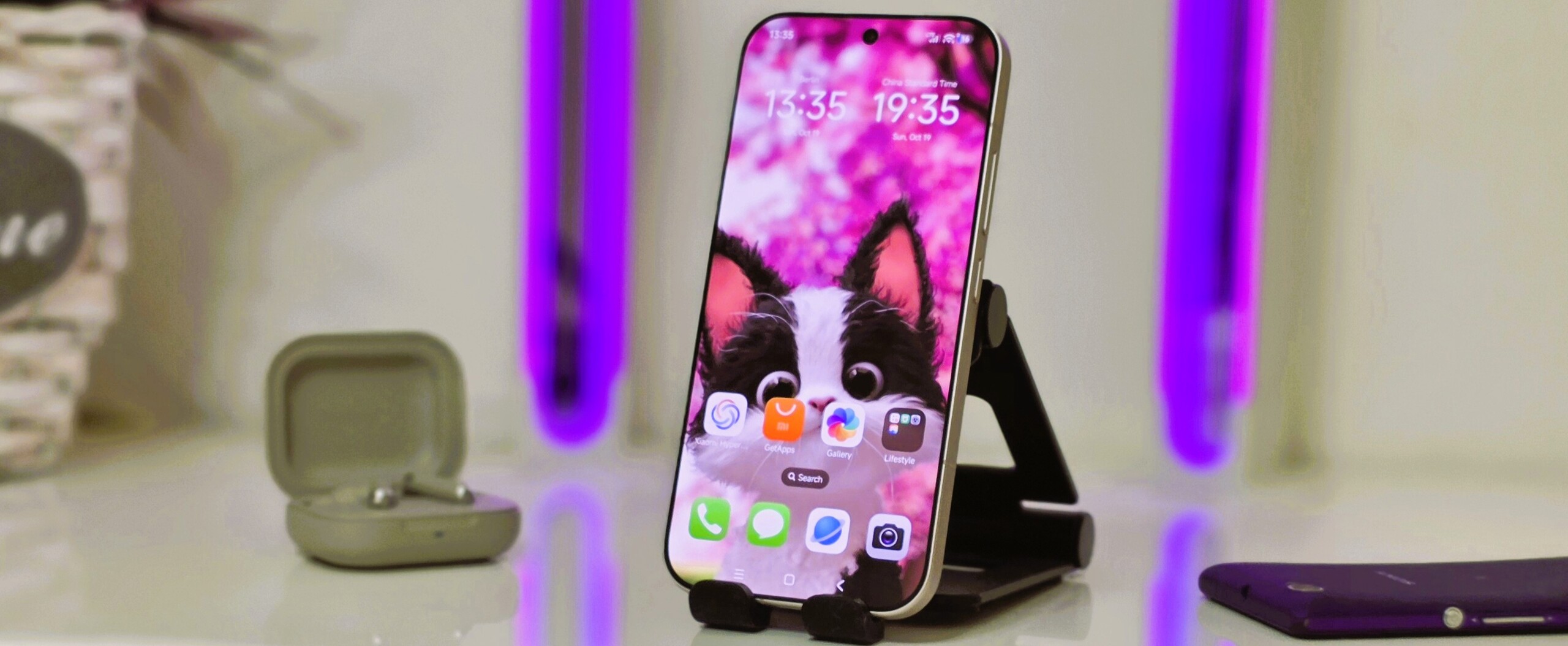

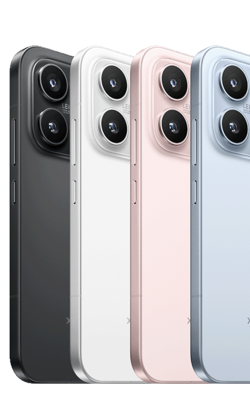
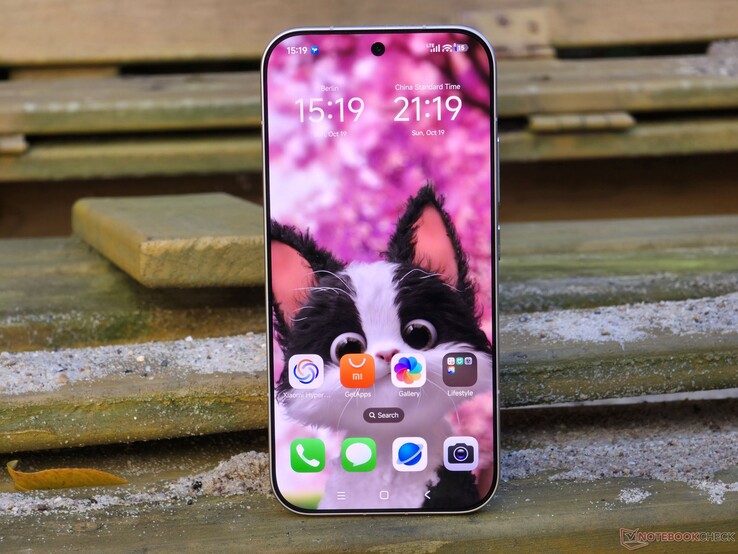










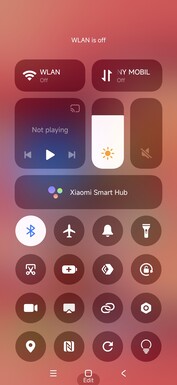
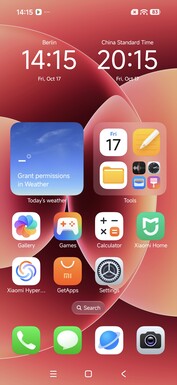
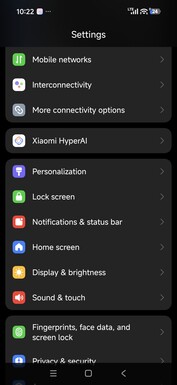
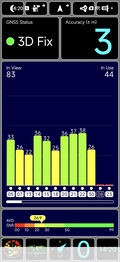
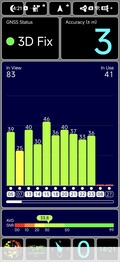




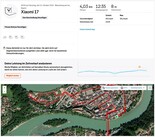
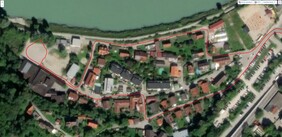












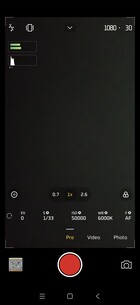

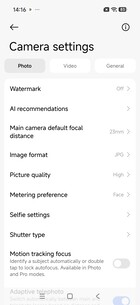

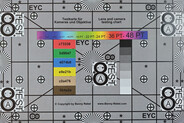

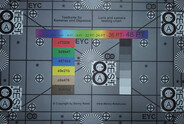





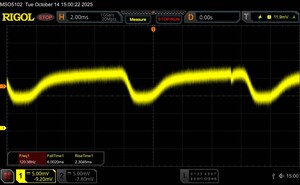





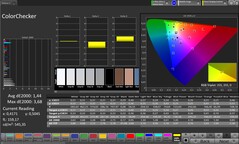
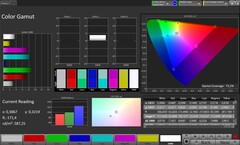
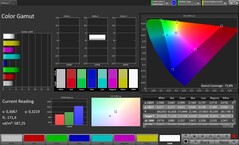
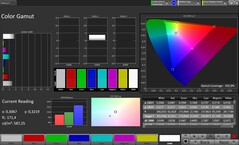
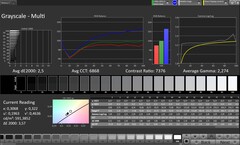
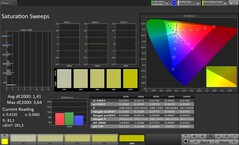
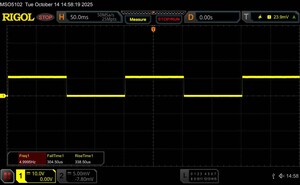
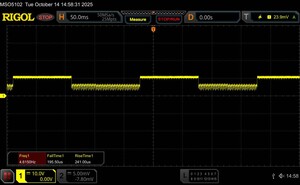
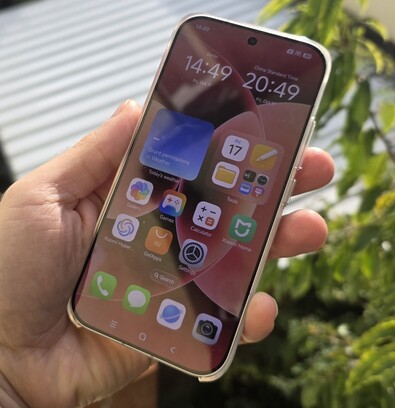
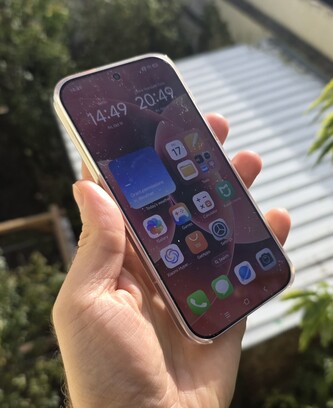



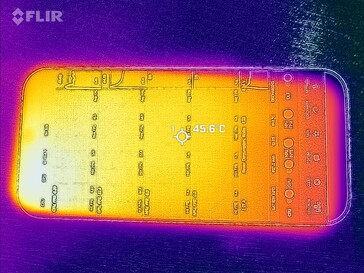
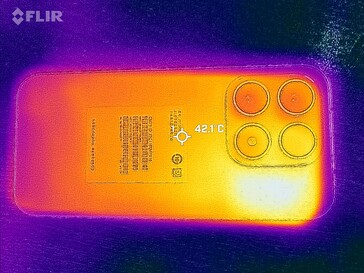
 Total Sustainability Score:
Total Sustainability Score: 




